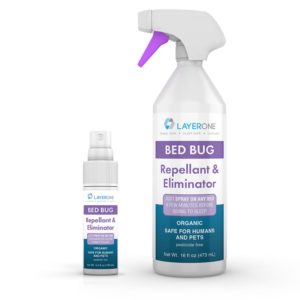The recent outbreak of bed bugs in their numbers has left many people alert and alarmed. The recent trends in the increase in bed bugs mean most people and places are now exposed to the threats caused by bed bugs.
It was thought in previous times that bed bugs could only be found in bed areas of homes and hotels but such thoughts have been debunked seeing that anywhere can be a nesting place for beg bugs to thrive as long as they have access to humans and furry pets.
One of the more peculiar places that have seen the upward rise of bed bugs in public transports (Trains, Planes, Buses etc.). It comes as no surprise to witness the alarming numbers of bed bugs in transportation services, this is because they provide two conditions on which bed bugs can live on; Availability of humans to feed on and a cool hiding place to rest and breed makes public transports the ideal place for bed bugs to rain havoc.
Tens of millions of people use public transports on a daily basis. These streams of people provide the perfect cover for bed bugs to move around; They are after all the best hitchhikers on the planet. They can easily move from place to place using clothing, bags, and shoes of commuters as their vessels of transport.
Just one or two bed bugs can start a colony undetected inside of public transports. Seats provide adequate covers for them to operate as well as give them close access to humans to feed on. Planes are as susceptible to bed bugs as buses. Cabin crew, business class, economy class and even storage areas can all be overtaken by bed bugs if preventive and control actions are not utilized.
Public transportation companies are oblivious to the workings of bed bugs and this fuels the problem. A company can tumble down if the infestation of Bed bugs gets out of hand. These little suckers know how to pack a punch. It is important to know a thing or two about bed bugs and how they operate. The following information below sheds light on what public transportation companies need to know about bed bugs.
- Bed bugs are stealthy and elusive all through their lives. From their egg stage down to the adult stage, these minute creatures can go undetected.
- Common hiding spots for bed bugs are corners of seats, under the seats, overhead luggage areas
- Female Bed bugs need just one blood meal to reproduce batches of eggs
- Bed bugs are not attracted by dirt although they might hide in dirty areas. They are attracted by people and furry animals.
- The three life cycles of bed bugs are eggs, nymphs, and Adult. The eggs are either white or translucent in color, the nymphs are a little bit brown in appearance but they appear red after a meal and the adult bed bug is rusty brown in color but red after a blood meal
- They are not invisible to the naked eye although they can be difficult to spot.
Users of public transports can take precautionary actions as well when it comes to bed bugs.
- Wash all clothing with hot water immediately after a trip
- Vacuum clean all luggage and bags and discard the contents in a plastic bag
- Stay clear of padded sits and suspicious looking areas that might be breeding grounds for bed bugs.
- Keep your bags and luggage in a plastic bag when using public transports
- You can use security regulations approved plastic seals to seal suitcases when using airplanes for transport.
Public transports companies and commuters can take immediate actions when there is an issue concerning bed bugs. Just spray ArthroSpray on the area needed and wait a few minutes for it to dry. It’s that easy. ArthroSpray is the first natural & pesticide free spray that actually repels bed bugs. Our product’s critical, patented ingredient (ArthroShield™) provides a ready to use natural insect repellent which provides pest control against bed bugs, lice & ticks. And its totally safe for humans and pets (don’t spray near eyes).
-
ArthroSpray Pesticide-Free Bed Bug Repellent (Spray)
Select options This product has multiple variants. The options may be chosen on the product pageLayerOne’s ArthroSpray is the ultimate in portable protection from arthropods. Spray on sheets to repel bed bugs, dust mites and lice when you travel.

